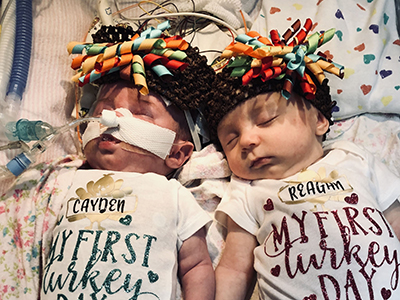Treatment
Single Ventricle Surgery
Single ventricle heart defects like hypoplastic left heart syndrome (HLHS), require a series of open-heart surgeries over several years. These procedures are part of a staged reconstruction: a way to remodel the heart and the way your child’s blood flows. These surgeries aim to allow one pumping chamber (the ventricle) to do the work normally done by two ventricles.
Schedule an Appointment
Our pediatric specialists provide personalized care for your child’s physical, mental and emotional health needs. Meet our providers and schedule an appointment today.
Frequently Asked Questions
How does a single ventricle defect affect the heart’s circulation?
Are there different types of single ventricle defects?
What causes single ventricle defects?
How are single ventricle defects diagnosed?
What are the stages of a single ventricle defect repair?
Are there any risks with the Fontan procedure?
Do you need long-term follow-up care if you have the Fontan procedure?

Cardiac Surgery Outcomes Data
Learn about some of the lifesaving surgeries our pediatric heart experts perform each year at Children's National. Find data about the number of operations, how long children stay in the hospital after surgery (length of stay), and how well they recover after surgery (outcomes).

Meet the Providers Who Treat Single Ventricle Defects
Tiny Stents and Big Adventures: Hybrid Surgery Gives Cayden's Heart a Chance
Cayden was born with a life-threatening complex congenital heart defect. Learn how the hybrid procedure for HLHS helped Cayden.
Departments that Treat Single Ventricle Defects

Pediatric Cardiac Surgery
Children's National is ranked among the nation’s top pediatric heart surgeons, and our team offers advanced care and proven results. Learn more about the procedures available for pediatric cardiac disease and congenital heart defects.

Help Kids and Make a Difference
Invest in future cures for some of life's most devastating diseases. Give today to help more children grow up stronger.





